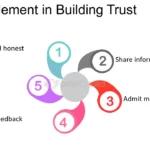In web design, images and graphics play a pivotal role in shaping the user experience and conveying a brand’s message. They provide visual interest, capture attention, and help tell a story. Effective use of images and graphics can make a website more engaging, memorable, and impactful. In this article, we’ll explore the power of images and graphics in web design and discuss how to use them effectively to enhance your website.
1. Create Visual Impact
Images and graphics can instantly grab a user’s attention and set the tone for the website. A striking hero image or banner can draw users in and encourage them to explore further. Consider using high-quality visuals that align with your brand’s identity and message.
2. Tell a Story
Visuals are a powerful storytelling tool. Use images and graphics to illustrate your brand’s story, showcase your products, and highlight key features or benefits. Storytelling through visuals can create a more immersive and emotional connection with your audience.
3. Enhance Usability
Graphics can improve usability by providing visual cues and enhancing user comprehension. For example, icons can represent actions (e.g., a shopping cart icon for “Add to Cart”) and navigation elements (e.g., a home icon for the homepage). Use graphics to guide users and clarify complex information.
4. Break Up Text
Images and graphics can break up large blocks of text, making content easier to digest. Visual elements such as infographics can simplify data and complex information, making it more engaging and accessible to users.
5. Create Consistency and Cohesion
Use a consistent visual style across your website to establish a cohesive brand identity. This includes a consistent color palette, image style, and graphic elements. Consistency helps users recognize your brand and feel more comfortable navigating your site.
6. Optimize for Performance
Large or unoptimized images can slow down your website and impact the user experience. Optimize images by compressing them and using appropriate file formats (e.g., JPEG for photos, PNG for graphics with transparency). Consider using responsive images (srcset) to serve different image sizes based on the user’s device.
7. Maintain Accessibility
Ensure that images and graphics are accessible to all users. Provide descriptive alternative text (alt text) for images so that screen readers can convey the content to users with visual impairments. Consider color contrast and avoid relying on color alone to convey information.
8. Use Visuals to Evoke Emotion
Images and graphics can evoke emotions and influence user perception. Choose visuals that resonate with your target audience and evoke the desired emotional response. For example, images of people using your products can create a sense of trust and relatability.
9. Balance Images and Text
While images and graphics are essential, balance is key. Avoid overwhelming users with too many visuals, as this can distract from your content and slow down loading times. Maintain a good balance between text and visuals to keep users engaged without compromising performance.
10. Test and Iterate
Regularly test your website’s images and graphics with real users to understand their impact on the user experience. Gather feedback and use analytics to monitor user behavior and engagement. Continuously iterate based on insights to optimize your visuals for better performance and effectiveness.
Conclusion
The power of images and graphics in web design lies in their ability to capture attention, tell a story, and enhance the user experience. By using high-quality visuals thoughtfully and purposefully, you can create a more engaging and memorable website. Prioritize optimization, accessibility, and balance to ensure that your visuals contribute positively to your website’s overall performance and usability. Regular testing and iteration will help you refine your approach and create a visually appealing and impactful web presence.

